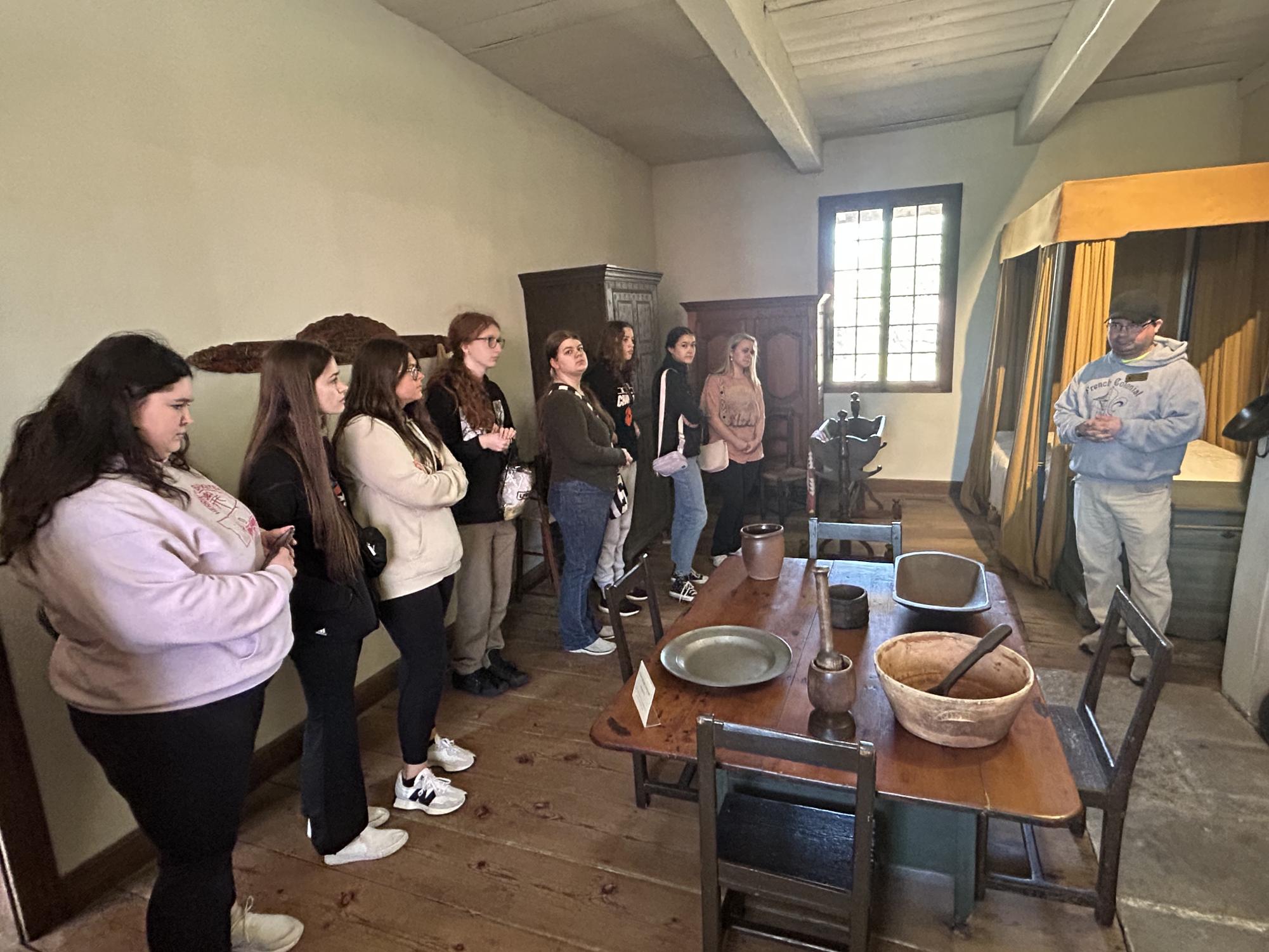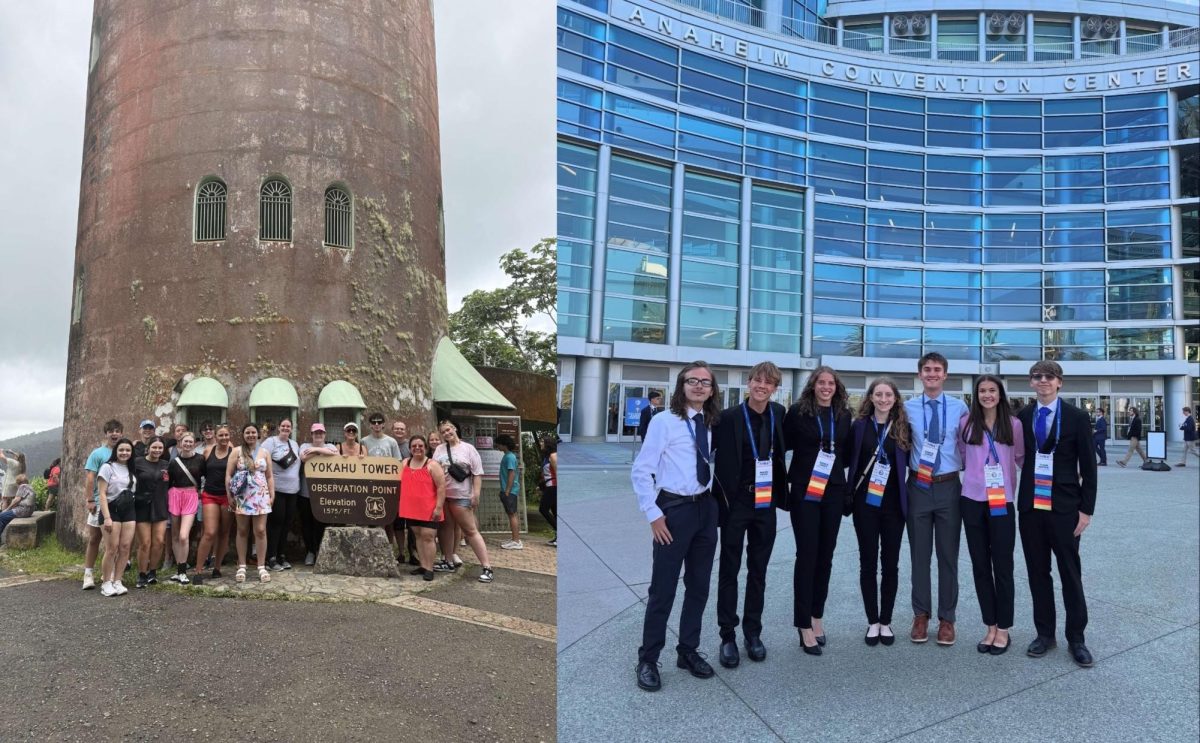Named after Paris’ Patron Saint, Ste. Genevieve (in French, Sainte-Geneviève) is a tiny, colonial-era town in Missouri. It is generally unknown when it was established, but it was most likely sometime between the 1740s—1750s, by French-Canadian settlers searching for more land. Today, it still exists as the oldest surviving European settlement in Missouri.
Mrs. Stanley decided to take 11 of her students because “it’s quaint. It’s calm. And you do see the reflection of the French there, just like you see the reflection of the Italians here.” Her students love the trip. Some, she says, even return to Ste. Genevieve later on their own time.
Leaving shortly after school began, the bus bounded off towards the Mississippi River. Ste. Genevieve lies just beyond the river. It exists today as a restored town; many of its components (i.e. walls, bases, etc.) are original and—at least—authentic to the time (i.e. silverware, furniture, etc.).
In the settlement, students were able to follow along guided tours, which showed certain homes in the town. Through this, they were able to learn about the way of life over 200 years ago. They saw kitchens, gardens, bedrooms (after struggling up an extraordinarily narrow set of stairs), and salons (essentially our modern day living rooms). They learned how people did commerce, what their houses looked like, and what sort of society they existed in.
After touring a house and seeing the local catholic church, the students were given a buffet lunch in town and they were allowed, afterwards, to explore some of the shops. These included: a local honey shop, a candy store, and an antique store with wares all themed around Christmas.
Alisa Eggemeyer (12), like many students, couldn’t wait to see the historic architecture Ste. Genevieve had to offer. Alisa’s home town is actually very close to Ste. Genevieve, and she loved the chance to visit a place so close to where she was born. “It was very heartwarming to see all of the different small businesses around that had really cool stuff,” she explains.
Ryleigh Pitman (11) valued the exciting and educational experience she got at Ste. Genevieve.
Mads LaBotte (12) was the only one (besides Mrs. Stanley) who has previously been to the town. She was most excited to return to see the colonial-era homes and gardens. She got her wish, being able to walk through blooming gardens.
“The trip really inspired me to look more into my roots as someone who has French history. The architecture is always stunning, and I hope everything can be preserved for years to come,” Mads says.
Emmarie Bires (11) was exceptionally anxious to journey through the local cemetery and see the headstones, some of which were about 200 years old, some even older.
Maddie Martin (10) was happiest to explore a pewter shop and see the handmaid work sold there. In that store, students were given a demonstration by the owners regarding the process of pouring headed pewter (a silver-appearing metal alloy which historically—because of the use of lead—has been known for poisoning. However, that sold in Ste. Genevieve is completely safe for food use) into molds and shaving off excess bits of pewter—reffered to as “flash.”
Overall, the trip to Ste. Genevieve was a great moment for Herrin High School French students to explore the Francophile colonization our region experienced before our country was even formed. One can only hope that a historically focused future is held, one that helps us remember where we came from, so we can see whither we go.











Bob Downen • May 1, 2024 at 8:46 am
I loved St. Gen!!!! I wish Madame Stanley was not retiring so I could go again! I loved the bee shop.